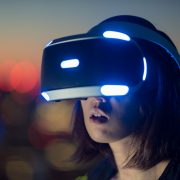Bring your vision to life with virtual reality
With the availability of affordable headsets, virtual reality is fast becoming a buzz word in construction circles. But how can it help designers? Shaun Soanes explores this brave new virtual world.
Virtual reality provides real-world perspectives and experiences in a virtual environment. For those working in the built environment, this facilitates the creation of 3D models that work effectively for a 360-degree computer-generated vision.
This allows planners, architects, engineers and builders to view and showcase designs, elevations and layouts in a real-world environment. This is handy not just for internal reviews and design iterations but also for client approval.
Where it all began
Virtual reality simulates a realistic experience in an immersive environment that can be similar to the real world in order to create a lifelike experience.
The exact origins of virtual reality are disputed, partly because of how difficult it has been to formulate a definition for the concept of an alternative existence but there has been a lot of work done on developing this technology in the last decade.
By 2016 there were at least 230 companies developing VR-related products. Facebook has 400 employees focused on VR development and Google, Apple, Amazon, Microsoft, Sony and Samsung all have dedicated VR groups.
Applying it to building design
The emergence of virtual reality applications for architecture has been one of the big stories of the past few years. In the future, we’ve been told, VR will become an integral part not just of presenting a project, but of the design process as well.
This could be an interesting development. After all, the biggest challenge for us is often showing the client exactly what the finished article will look just like. No matter how astounding your 2D or 3D model may be or how detailed your floor plan, it can take a vivid imagination from the client to get properly excited by an idea.
VR technology could allow architects and designers to develop initial design mock-ups, work more collaboratively and really sell an idea better than any other medium.
After all, it can transport users into a fully interactive environment, giving them the opportunity to explore a virtual representation of a particular room, floor, or building design as a whole.
What’s more, once the model is inside the VR environment, things like materials, lighting, furniture and other small details can be added. You can even add tiny, decorative objects such as paintings, books, logos and plants.
Getting started
VR head-mounted displays (HMDs) such as the Oculus Rift and HTC Vive have the power to change the way architects design and communicate buildings before they are built. In theory, the wearer is instantly immersed in a true three-dimensional environment that gives an incredible sense of scale, depth and spatial awareness.
This sensation of actually being inside a building makes VR an incredibly powerful tool for communicating design intent. It could also play an important role at all stages of the design-to-construction process, from evaluating design options and showcasing proposals, to designing out errors and ironing out construction and serviceability issues before breaking ground on site.
There seems little doubt to me that VR can be effectively used as a presentation tool. It’s certainly something we will be considering in time.






Leave a Reply
Want to join the discussion?Feel free to contribute!